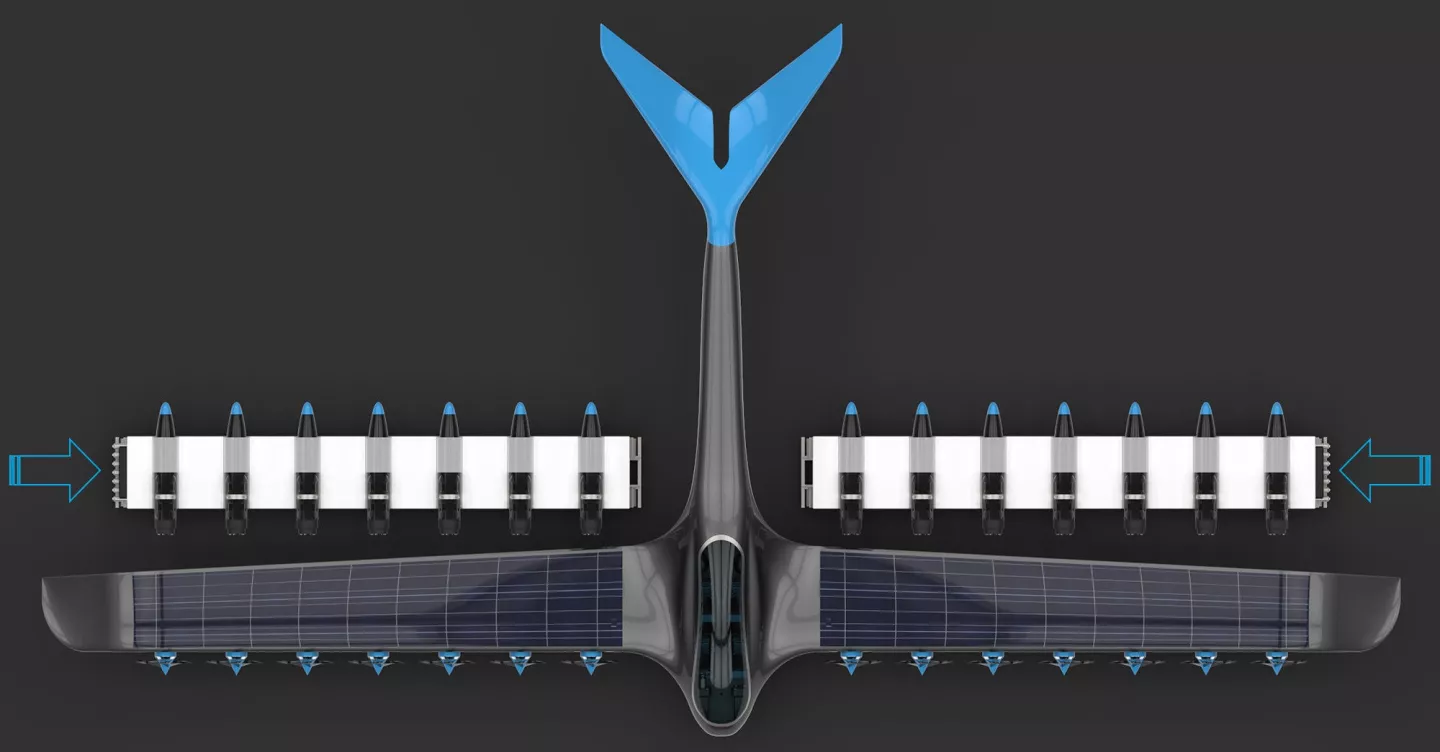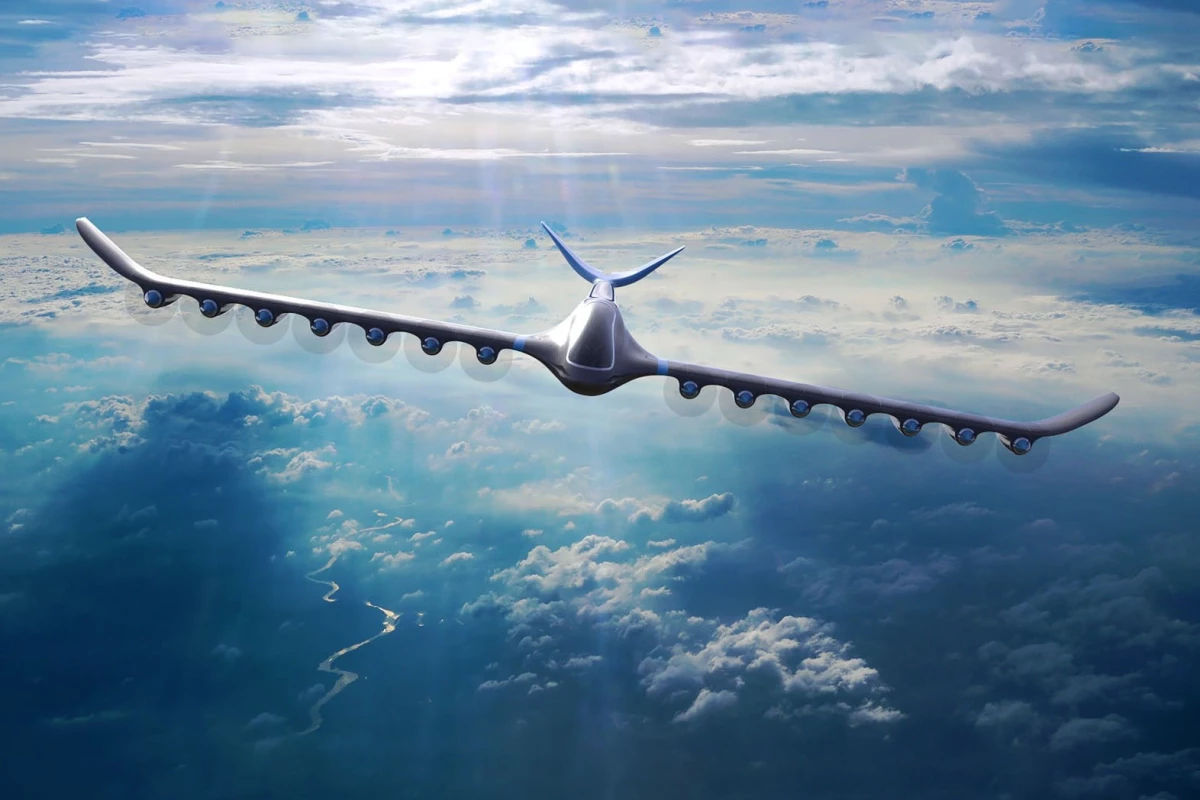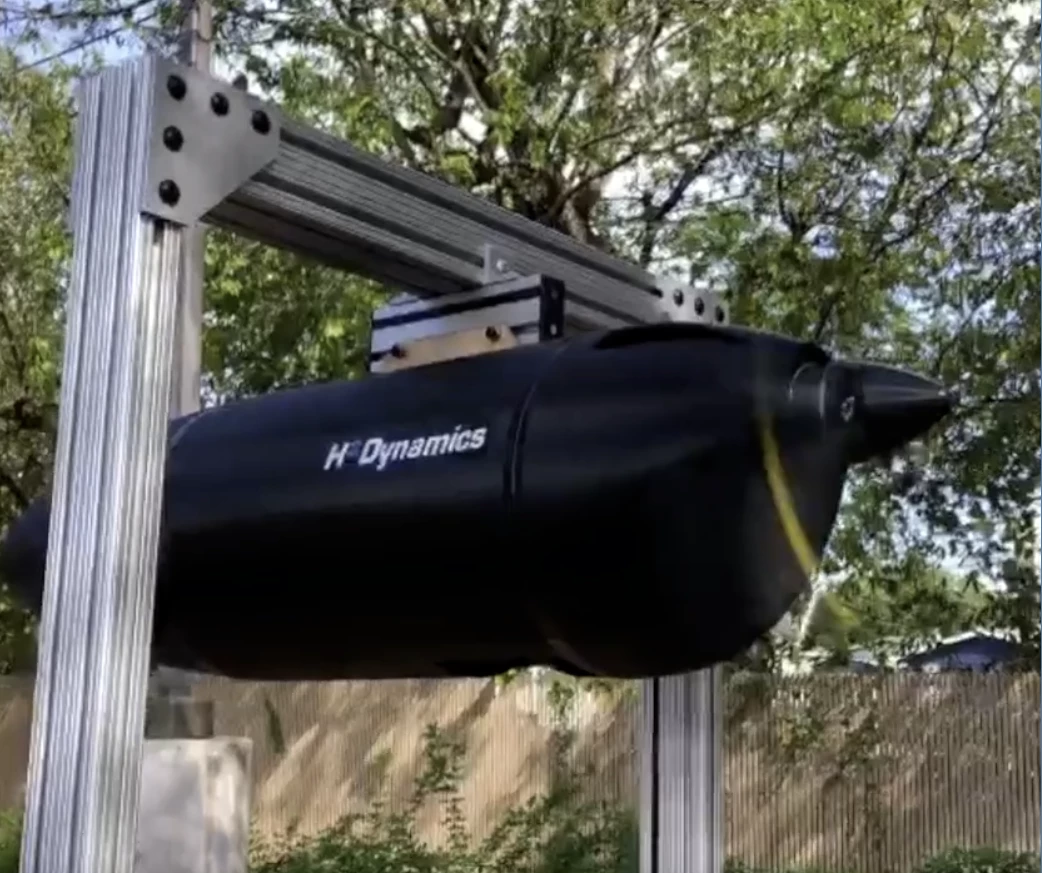France's H3 Dynamics has presented its self-contained hydrogen propulsion pods for retrofit or line fit to drones and airplanes. They deliver enormous range and endurance figures without heavy batteries, and they mirror the approach Airbus and others are taking with commercial airliners.
Batteries weigh aircraft down, they can heat up, and they take a long time to charge – but they're very simple, easy to use, and they store enough energy for many use cases. Hydrogen is a pain in the butt at every step of the way, but used in a fuel cell powertrain it carries so much more energy than lithium batteries for the weight it costs that you can keep your aircraft flying for ridiculous lengths of time.
To illustrate, back in 2020, we compared the world record endurance flights of multicopter drones running on pure battery power (1 hour, 51 minutes), a 16-liter gasoline-electric hybrid system (10 hours, 14 minutes), and a hideously ugly hydrogen fuel cell system fed by 6 liters of gas (12 hours, 7 minutes). If range and endurance are your priority, batteries don't come close to hydrogen.

And while it's possible to stick the hydrogen tanks and fuel cells in the middle of an airframe, where the combustion powertrain or battery pack would normally live, there's a few reasons why you might not want to. Hydrogen weighs less than batteries, but takes up a lot of volume. You might want to dedicate that space to cargo, for starters. Or, if you're talking about a bigger airframe, passengers. If you're talking about passengers, there might be some psychological value in having the hydrogen stored well away from the cabin, and putting the whole system out on the wing probably helps with cooling and airflow as well.
Thus, Airbus is looking at self-contained end-to-end hydrogen propulsion systems for its future zero-emissions airliners. Fully swappable units that can be popped on and off for maintenance and whatnot without disrupting an aircraft's flight schedule.
And it's a similar concept here with H3 Dynamics. These guys have developed a lightweight, aerodynamic hydrogen propulsion nascelle containing a hydrogen tank, fuel cell system, electric motor and propeller; the whole powertrain. You can piggyback it on top of a fixed-wing fuselage, or you can stick multiple units out along the wings for distributed propulsion.
Right now, it's sized to be relevant to the commercial fixed-wing drone market; inspection, reconnaissance, scientific and emergency-zone aircraft. It's been tested on a 25-kg (55-lb) fixed-wing cargo drone using two pods, and H3 Dynamics estimates a whopping 350-km (217-mile) range running on gaseous hydrogen, or an outlandish 900 km (560 miles) using a more complex cryogenic liquid hydrogen fuel system closer to what Airbus is working on. Here's a video:
Next up is VTOL, which presents its own challenges. H3 has teamed up with Australian eVTOL drone company Carbonix to begin developing a VTOL hydrogen cargo and commercial drone based on a lift-and-cruise layout. To start with, H3 will start sticking some propulsion pods onto existing Carbonix aircraft, presumably just to handle long-range cruise flight while the existing battery system stays in place to handle the more unpredictable power demands of VTOL and hover phases.
As the partnership progresses, things will become more integrated, but we imagine some sort of battery will remain part of the design, capable of delivering the near-instant torque changes you need to stabilize a multicopter in a hover. Perhaps the fuel cells can divert some power off to charge up some much-smaller battery packs during flight. You can see the standard Carbonix Volanti airframe in the video below.
Then comes liquid hydrogen. The company has been working with the Institut Supérieur de l’Aéronautique et de l’Espace (ISAE-SUPAERO) in Toulouse on cryogenic liquid H2 systems since 2019, and the two groups have set themselves the goal of flying a hydrogen aircraft clean across the Atlantic Ocean within two years. For reference, the shortest Atlantic crossing is about 2,575 km (1,600 miles) between Senegal and Brazil – so it's a pretty epic challenge.
And finally there's manned flight. The company is working toward a larger, more powerful version of its propulsion pods that can be retrofit to a two-to-four-seat passenger plane, and it's hoping to get one airborne by the end of 2023. These could become a product you could retrofit to a lot of small planes, potentially even without removing the fossil fuel engines they've already got, so you might end up with double redundant powertrains and bonus range if you wanted it.

So it's a bottom-up approach to arriving at manned flight, in contrast to the top-down strategy of companies like ZeroAvia, which have boldly jumped straight into the fearsome journey of developing zero-emissions hydrogen airliners. H3 is starting small, safe, and free from regulatory red tape by putting thousands of data-gathering hours on commercial drone airframes – and these will bring in some cash while it slowly scales up to start working with small planes and beyond.
It's pretty neat stuff, and we look forward to following H3's progress through the next steps.
Source: H3 Dynamics









